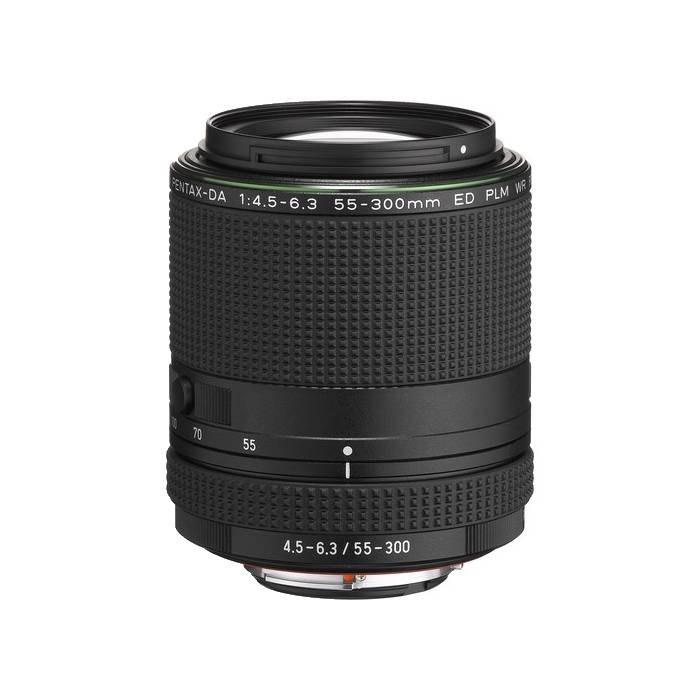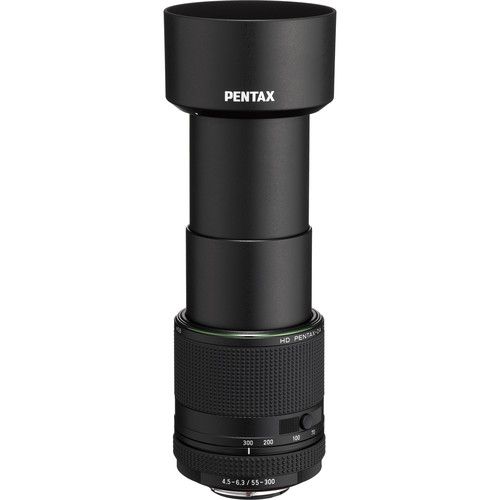Product Description
Pentax HD DA 55-300mm f4.5-6.3 ED PLM WR RE
- K Mount Lens/APS-C Format
- 84.5-460mm (35mm Equivalent)
- Aperture Range: f/4.5 to f/32
- Extra-Low Dispersion Glass
- HD and SP Lens Coatings
- Pulse Autofocus Motor
- Quick Shift Focus
- Retractable Design
- Weather-Resistant Construction
- Rounded 9-Blade Diaphragm

Versatile and long-reaching the HD PENTAX-DA 55-300mm f/4.5-6.3 ED PLM WR RE Lens from Pentax is an 84.5-460mm equivalent telephoto zoom designed for APS-C-format K-mount DSLRs. Ranging from portrait-length to super telephoto, this lens employs extra-low dispersion glass in its optical design in order to reduce colour fringing and chromatic aberrations throughout the expansive zoom range. An HD coating has also been applied to lens elements to minimise flare and ghosting for increased contrast and colour fidelity when working in strong lighting conditions. Furthermore, an SP (Super Protect) coating has been applied to the front and rear surfaces of the lens, too, to guard against fingerprints, smudging, and cleaning marks.

Complementing the optical design is a quick performing PLM (Pulse Motor), which delivers smooth, quiet, and exacting autofocus operation to benefit both stills shooting and video recording. A compact and lightweight form factor, along with a retractable design, also caters to intuitive handling and use while travelling, while a weather-resistant construction benefits working in trying weather conditions.
Telephoto zoom 55-300mm f/4.5-6.3 lens is designed for APS-C-format Pentax K-mount DSLRs, where it provides an 84.5-460mm equivalent focal length range.
Extra-low dispersion glass is used in the lens construction in order to minimise chromatic aberrations and colour fringing throughout the zoom range for increased image clarity.

An HD coating has been applied to lens elements to minimise flare and ghosting for increased contrast and colour neutrality when working in harsh, backlit lighting conditions.
The PLM affords quick autofocusing performance, and couples with an electromagnetic diaphragm to provide smooth and quiet operation that is especially well-suited to video recording applications. Use of this feature may require you to update your camera with the latest firmware in order to ensure accurate exposure results.

Weather-resistant construction features 11 distinct seals about the lens' body to prevent the intrusion of water and dust when working in harsh environments.
An SP coating is featured on the front and rear elements and works to protect the glass from fingerprints, smudging, and other marks.
Rounded nine-blade diaphragm contributes to a smooth bokeh quality when working with shallow depth of field and selective focus techniques.

























